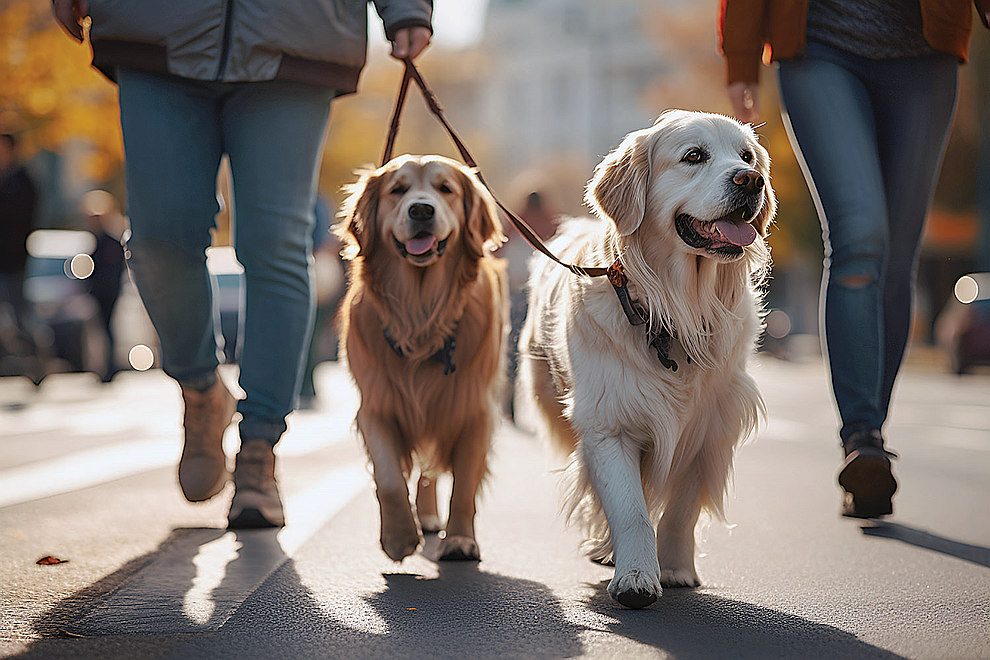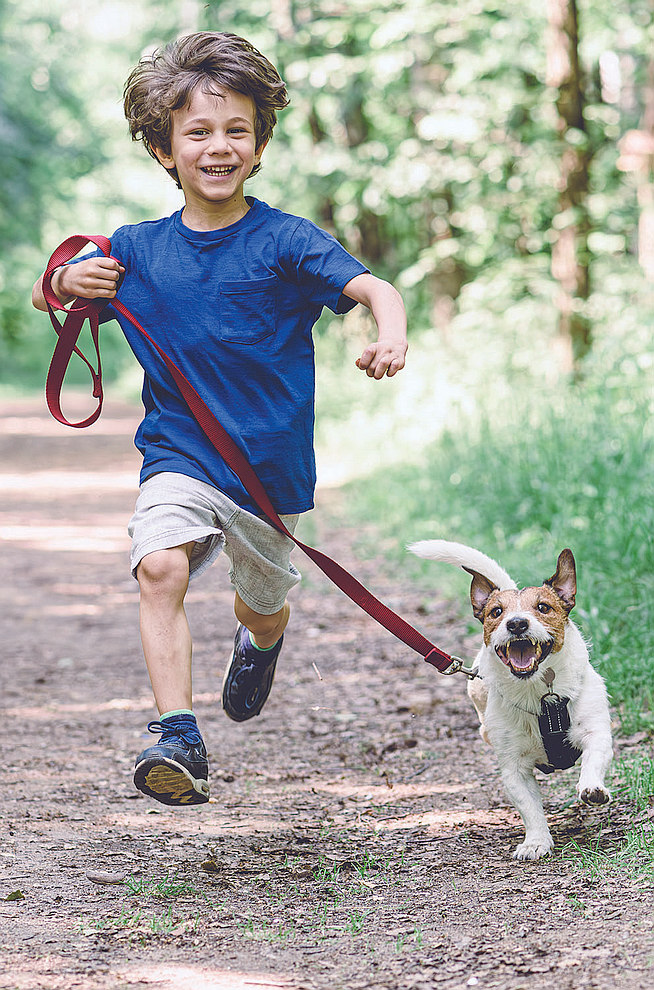By Heidi Dahms Foster
Walking is a wonderful way to get some fresh air and exercise for both you and your dog. Before you head out, attention to these 10 tips can make your treks – long or short – enjoyable, and safe.

- Know your leash laws. Leash laws are there for the protection of your dog and others’ dogs. A sturdy collar and strong six-foot leash are necessary equipment. It’s great to think that Rover will enjoy off-leash time and will stay with you or come immediately when called, but there’s always the “Oh look, a squirrel!” moment, which can end with your dog lost, in a fight with another dog, or in trouble with other wildlife. Your off-leash dog may also cost you a ticket if Animal Control is out and about. If your community has a leash law, obey it, for your safety and others’. If you hike in areas where snakes are a problem, a strong leash and perhaps some snake avoidance training could save your dog’s life.
- Leave the retractable leashes at home. Retractable leashes might seem like the best of both worlds – freedom while still technically tethered – but they are fraught with danger. If your dog is at the end of one of these leashes, reeling him in quickly in an emergency can be nearly impossible. An excited or agitated dog can wrap the lead around your legs, causing a fall or the inability to control him. The thin lead can also cause a nasty friction burn or cut if you become entangled in one when your dog is running headlong in another direction. Letting your dog approach another while on one of these leashes can quickly escalate into a dog fight before you can control either dog.
- Carry your phone and accessible identification for you and your dog. There are many ways to carry ID, and this information can hasten help if you need it in case of injury. If you are conscious, you can call for help. If you suffer a medical emergency or a fall that leaves you unconscious, carrying accessible and visible identification, such as a lanyard or ID in a tag holder, will help the person who finds you quickly obtain care for you. If your dog has medical or other needs, put that information with your ID. If you must go to the hospital, you’ll want to know your pet is safe, too, so be sure contact information is included for emergencies so someone can pick up your dog.
- Wear comfortable, safe shoes, and layered clothing. If you walk in the dusk or dark, wear reflective clothing and carry a bright flashlight. Your dog should wear a reflective collar or coat. Always wear shoes that you can comfortably walk in over any kind of terrain. Layer your clothing if you’ll be out in changing weather, and if rain is threatening, you might consider tucking a rain poncho in your pocket. If your dog is sensitive to cold, such as short haired breeds, bring a coat for him. If the weather will be hot, especially pay attention to brachycephalic, or short-nosed breeds that find it more difficult to regulate their temperature through breathing.
- Be aware of your surroundings and pick your route carefully. If you can walk in areas that have sidewalks or enough room to stay well out of the roadway, choose those routes. Don’t let distractions keep you from noticing the dangers of loose or reactive dogs, approaching vehicles or people. Being aware is being safe. It’s a good time to take out the earphones and enjoy your surroundings and the time with your dog.
- Train your dog. A dog that walks politely on a leash and pays attention to basic commands in any situation is a pleasure to spend time with, and much safer to walk with. Invest time in training your dog to walk on a leash, sit or lie down on command, and come without fail. A basic obedience class, especially in a group with other dogs, is a great investment that will teach your dog to obey despite distractions. Having your dog trip you up or get loose while chasing an animal could cause injury or loss of your pet. Trying to control a dog that is walking you is exhausting. It just takes a few minutes a day to prepare you and your dog for a great walking experience.
- Practice pet etiquette. Not everyone wants to greet your dog, and not every dog is amenable to greeting other dogs. Many dog owners have had to protect themselves and their dog from people who insist “My dog is friendly; he just wants to play!” This is a dangerous practice for anyone walking a dog, whether you are the “friendly” dog owner or the person trying to fend off such an animal. Some dogs are reactive, some are protective, and some are fearful. All have the potential to be an issue if suddenly approached by an eager, unknown dog. Don’t be that person.
- Take care for those paws! You may have heard that if you wouldn’t walk on hot pavement, your dog shouldn’t either. Hot pavement can cause painful burns to a dog’s paws. Be aware of climate and realize that even on a mild day for you, the pavement may still be too warm for your dog. If you know heat may be a problem, pet supply outlets have many bootie options for dogs.
- Carry water for you and your pet. Hydration is important for you and your pet. Dogs cool themselves by panting because they don’t sweat like humans. Panting can make your dog thirsty and dehydrated, so be sure to carry water for both of you. Again, dog suppliers carry many water bottle/bowl combinations that are easy to carry.
- Know what to do if another animal approaches you. Hopefully, you’ll enjoy many wonderful walks with your dog. However, it’s always best to be prepared for the dog that gets loose from his yard, strays, or a dog that gets away from its owner. If not reactive, at the least an excited dog can rapidly escalate a confrontation. Most meetings between dogs are reasonably friendly, but it’s best to be prepared. If approached by a loose dog, stand your ground, stay calm and command it to back off. This is where your obedience training will pay off, so your own dog doesn’t make the situation worse. Carry something you can use as a barrier between you and the approaching dog, such as a backpack, jacket, cane or umbrella. A loud noise such as a whistle or air horn can sometimes deter an aggressive dog. In the worst-case scenario, pepper spray can deter an aggressive dog.
Proper preparation, awareness, and training will ensure many hours of great exercise and time with your dog.


